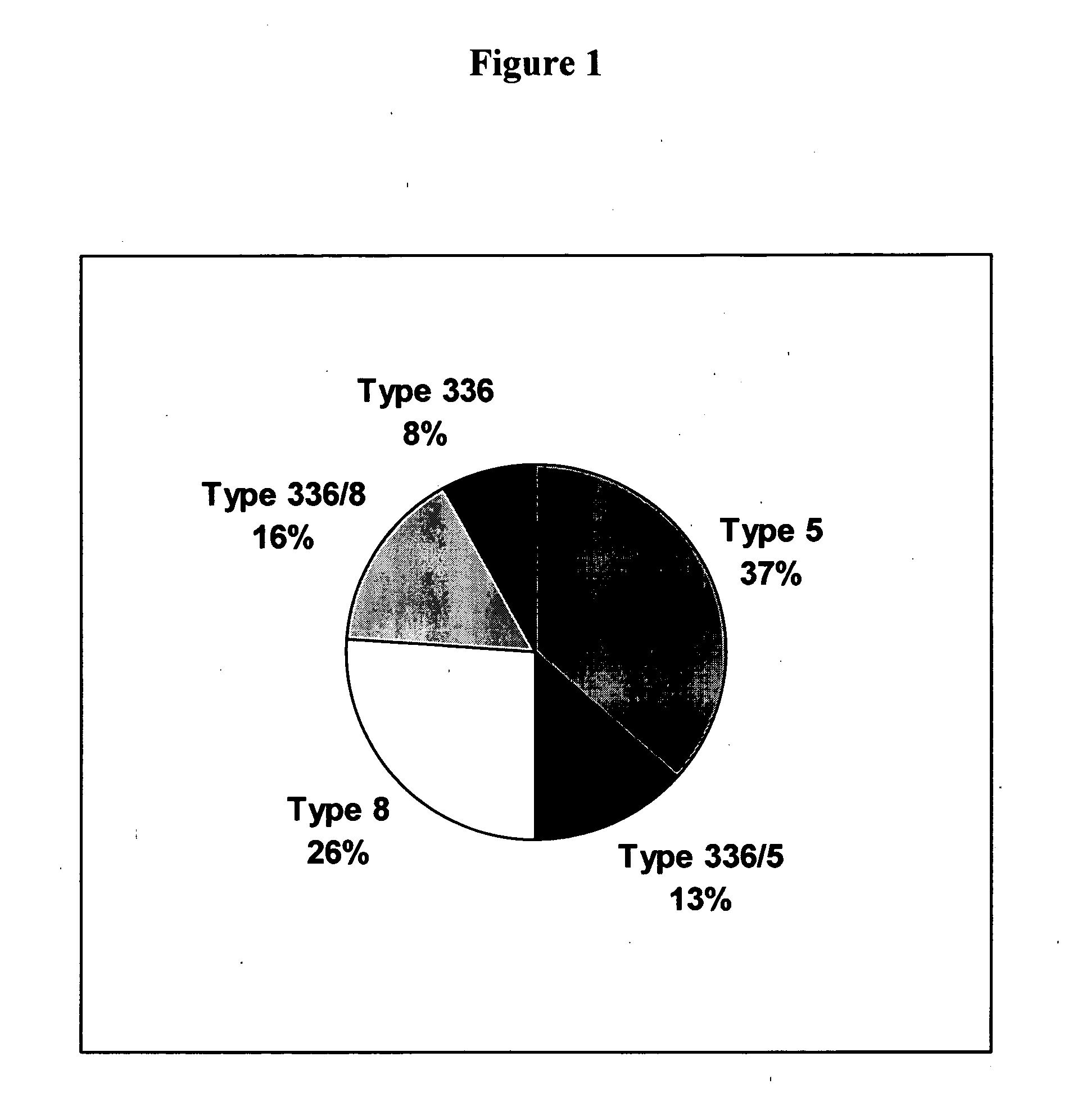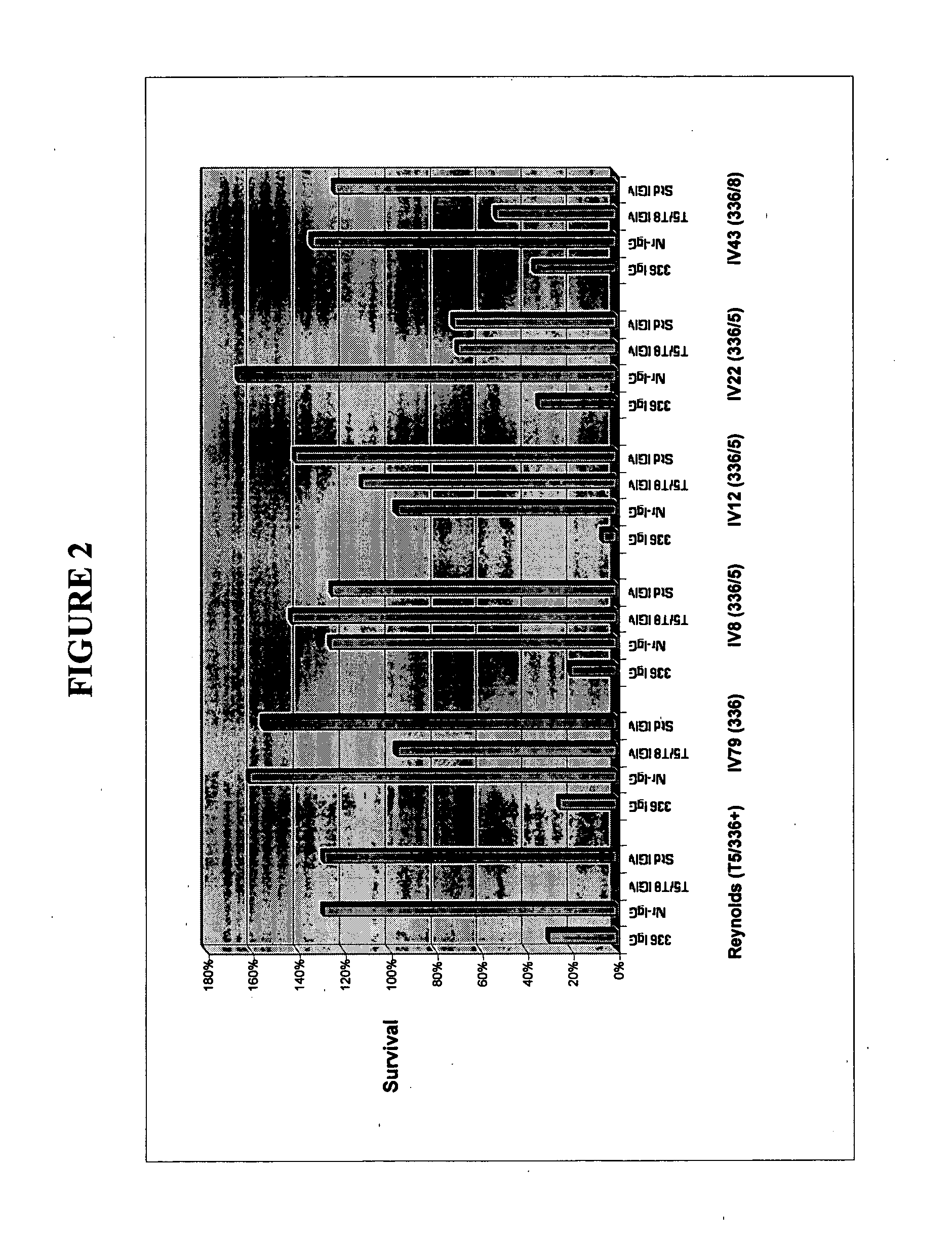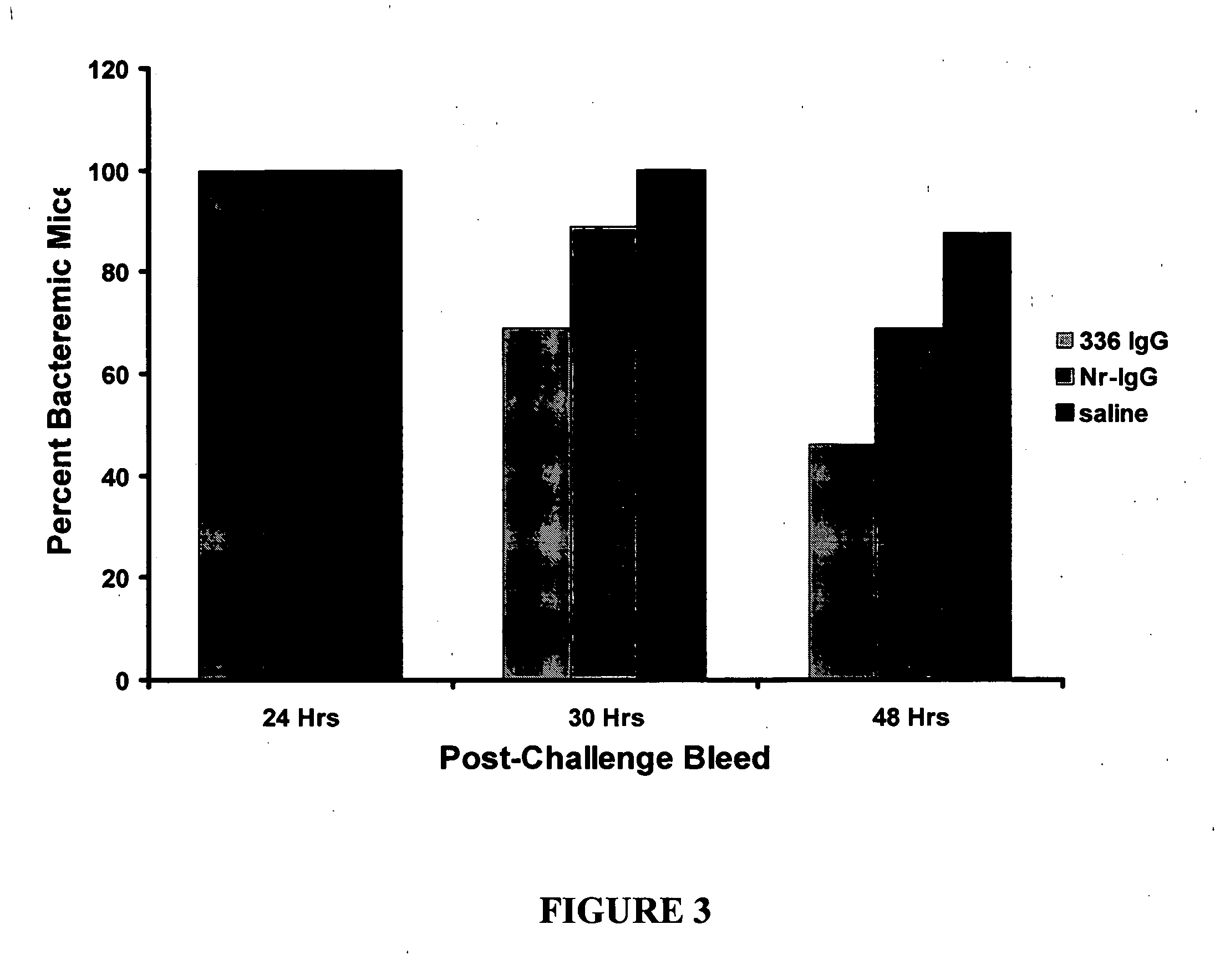Method of protecting against staphylococcal infection
a staphylococcal and vaccine technology, applied in the field of staphylococcal vaccines, can solve the problems that the protection range of 336ps conjugate vaccines could not have been expected
- Summary
- Abstract
- Description
- Claims
- Application Information
AI Technical Summary
Benefits of technology
Problems solved by technology
Method used
Image
Examples
example 1
Fermentation of S. aureus
[0067] A S. aureus 336 isolate according to the invention first is grown on a Columbia Broth agar plate supplemented with 2% MgCl2 and 0.5% CaCl2. A single colony is inoculated into starter culture of Columbia broth containing 2% NaCl and grown overnight with shaking at 37° C. The cells are grown in a 50-liter fermentor that contains the same medium and fermented at 37° C with agitation at 200 rpm for 24 hours, to an A650 nm of 20.0.
[0068] Cells for purification of antigen were killed by adding phenol-ethanol (1:1, vol / vol) to the fermentor to a final concentration of 2%, and mixing slowly for 2 hours at 15-20° C. No viable cells were detected after this treatment. The cells then were harvested by centrifugation at 14,500×g and stored at −70° C. until use. Approximately 800-900 grams of cell paste (net weight) were obtained from a 50-liter fermentation.
example 2
Purification of Antigen
[0069] The cell paste was suspended at 0.5 g (wet weight) per ml in 0.05 M Tris-2 mM MgSo.sub.4, pH 7.5. Lysostaphin (100 to 150 μg / ml) was added and incubated at 37° C. for 3 hours with mixing. Thereafter, DNase and RNase were added to final concentrations of 50 μg / ml each, and the incubation was continued for an additional 4 hours. The reaction mixture was precipitated sequentially with 25 and 75% ethanol in the presence of 10 mM CaCl2.
[0070] The 75% ethanol precipitate was pelleted by centrifugation at 12,000.times.g for 30 minutes, or at a lower rpm for a longer time. The supernatant was transferred to dialysis tubing. The reaction mixture was filtered through a 0.45 μm pore-size membrane and precipitated sequentially with 25 and 75% ethanol in the presence of 10 mM CaCl2. The 75% ethanol precipitate was dialyzed extensively against water at 3 to 8° C. and freeze-dried. The powder was dissolved in 0.2 M NaCl / 0.05 M Tris HCl, pH 7.0. The resulting crude m...
example 3
Characterization of Antigen
[0072] Chemical and physicochemical analysis of purified antigen. Purified 336PS showed Kd on Superose 12 HR of 0.30-0.36. The antigen itself was almost free of protein, but typically is found in combination with about 3-18% peptidoglycan, less than 1% nucleic acids, and contains about 5% phosphorus. No 0-acetyl groups were detected by colorimetric assay (Hestrin (1949) Biol. Chem. 189:249). Immunoelectrophoresis of purified antigen and elution pattern on ion-exchange column during purification process indicate a negatively-charged molecule.
[0073] Analysis of the carbohydrate composition of the antigen by HPAEC (high pH anion exchange chromatography) after its adequate complete hydrolysis showed that it is composed of N-acetyl-glucosamine and ribitol, typically in about a 1:1 ratio. A phosphorus assay indicated the presence of phosphorus as a phosphodiester function, clarifying the origin of the negative charge. The composition of this phosphorylated pol...
PUM
| Property | Measurement | Unit |
|---|---|---|
| concentration | aaaaa | aaaaa |
| net weight | aaaaa | aaaaa |
| concentrations | aaaaa | aaaaa |
Abstract
Description
Claims
Application Information
 Login to View More
Login to View More - R&D
- Intellectual Property
- Life Sciences
- Materials
- Tech Scout
- Unparalleled Data Quality
- Higher Quality Content
- 60% Fewer Hallucinations
Browse by: Latest US Patents, China's latest patents, Technical Efficacy Thesaurus, Application Domain, Technology Topic, Popular Technical Reports.
© 2025 PatSnap. All rights reserved.Legal|Privacy policy|Modern Slavery Act Transparency Statement|Sitemap|About US| Contact US: help@patsnap.com



